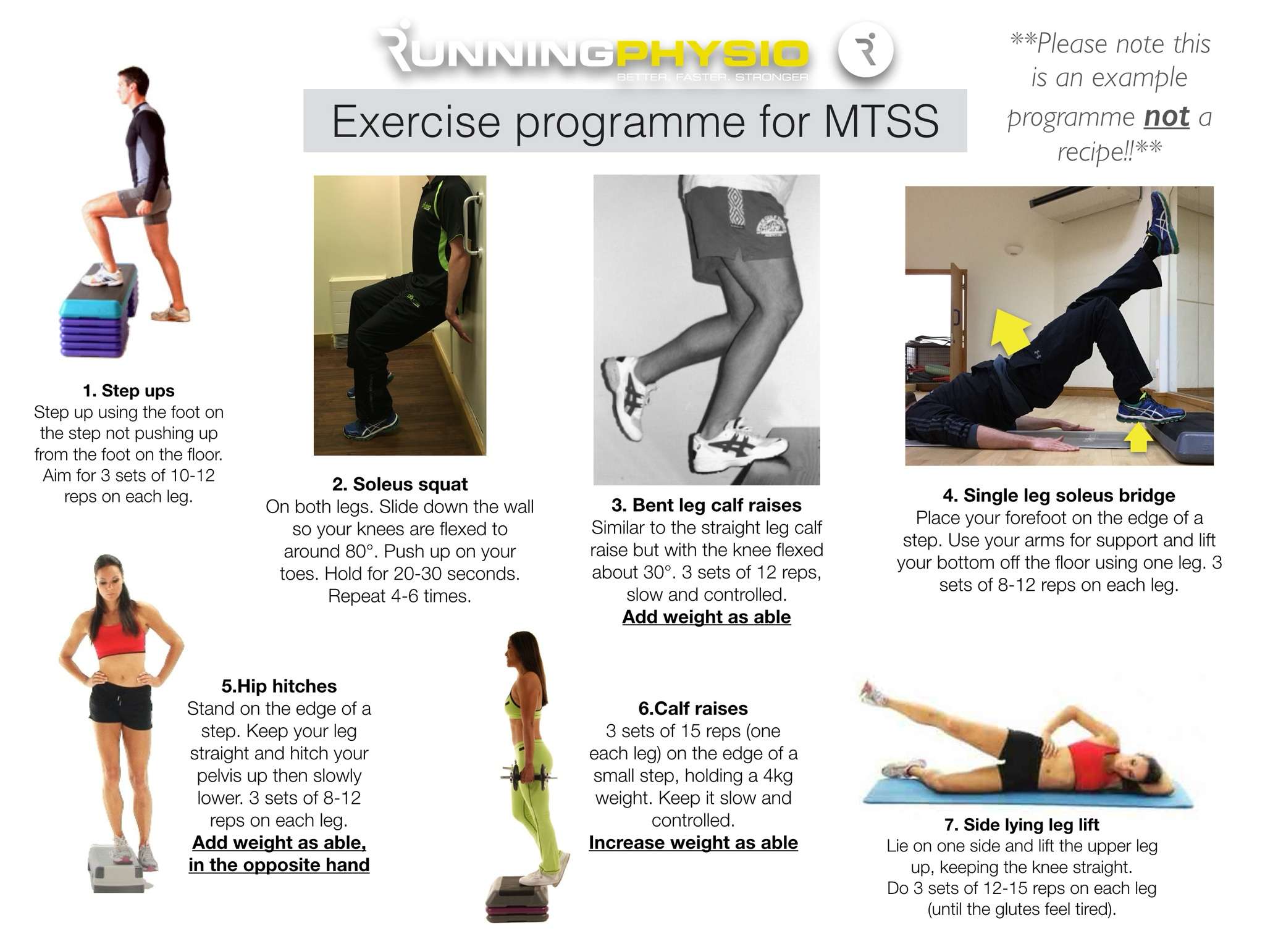Take a deep breath. Hold it for a moment, and then exhale. Feel more relaxed? Breathing exercises are one way to relax. Here you will learn about different ways to relax your mind and body. Being relaxed can help ease stress. It can also relieve anxiety, depression, and sleep problems.
How can you relax your mind and body?
There are lots of ways to relax. Some ways are designed to relax your mind and some to relax your body. But because of the way the mind and body are connected, many relaxation methods work on both the mind and the body.
You may want to try one or more of the following relaxation tips to see what works best for you.
Relaxing the mind
- Take slow, deep breaths. Or try other breathing exercises for relaxation.
- Stress Management: Breathing Exercises for Relaxation
- Soak in a warm bath.
- Listen to soothing music.
- Practice mindful meditation. The goal of mindful meditation is to focus your attention on things that are happening right now in the present moment. For example, listen to your body. Is your breathing fast, slow, deep, or shallow? Do you hear noises, such as traffic, or do you hear only silence? The idea is just to note what is happening without trying to change it.
- Stress Management: Doing Meditation
- Write. Some people feel more relaxed after they write about their feelings. One way is to keep a journal.
- Use guided imagery. With guided imagery, you imagine yourself in a certain setting that helps you feel calm and relaxed. You can use audiotapes, scripts, or a teacher to guide you through the process.
- Stress Management: Doing Guided Imagery to Relax
Relaxing the body
- Do yoga. You can get books and videos to do at home or take a yoga class.
- Stress Management: Practicing Yoga to Relax
- Try progressive muscle relaxation. This process involves tensing and relaxing each muscle group. Progressive muscle relaxation can reduce anxiety and muscle tension. If you have trouble falling asleep, this method may also help with your sleep problems. When you relax your muscles, your body gets the signal that it is okay to fall asleep.
- Stress Management: Doing Progressive Muscle Relaxation
- Take a walk or do some other activity. Making time to do things you enjoy can also help you relax.
- Get a massage or have someone give you a back rub.
- Have a warm drink that doesn’t have alcohol or caffeine in it, such as herbal tea or warm milk.
That’s why having a few strategies you’re familiar with can help you when you’re feeling anxious or angry. Consider adding these calming tactics to your toolbox.
But what happens when that anxiety or anger takes over, and you can’t calm down? Being able to calm yourself in the moment is often easier said than done.
We all worry and get upset from time to time. It’s a normal part of life.
Here are some helpful, actionable tips you can try the next time you need to calm down.
1. Breathe
“Breathing is the number one and most effective technique for reducing anger and anxiety quickly,” says Scott Dehorty, LCSW-C, of Delphi Behavioral Health.
When you’re anxious or angry, you tend to take quick, shallow breaths. Dehorty says this sends a message to your brain, causing a positive feedback loop reinforcing your fight-or-flight response. That’s why taking long, deep calming breaths disrupts that loop and helps you calm down.
There are various breathing techniques to help you calm down. One is three-part breathing. Three-part breathing requires you to take one deep breath in and then exhale fully while paying attention to your body.
Once you get comfortable with deep breathing, you can change the ratio of inhalation and exhalation to 1:2 (you slow down your exhalation so that it’s twice as long as your inhalation).
Practice these techniques while calm so you know how to do them when you’re anxious.
2. Admit that you’re anxious or angry
Allow yourself to say that you’re anxious or angry. When you label how you’re feeling and allow yourself to express it, the anxiety and anger you’re experiencing may decrease.
3. Challenge your thoughts
Part of being anxious or angry is having irrational thoughts that don’t necessarily make sense. These thoughts are often the “worse-case scenario.” You might find yourself caught in the “what if” cycle, which can cause you to sabotage a lot of things in your life.
When you experience one of these thoughts, stop and ask yourself the following questions:
- Is this likely to happen?
- Is this a rational thought?
- Has this ever happened to me before?
- What’s the worst that can happen? Can I handle
that?
After you go through the questions, it’s time to reframe your thinking. Instead of “I can’t walk across that bridge. What if there’s an earthquake, and it falls into the water?” tell yourself: “There are people that walk across that bridge every day, and it has never fallen into the water.”
4. Release the anxiety or anger
Dehorty recommends getting the emotional energy out with exercise. “Go for a walk or run. [Engaging] in some physical activity [releases] serotonin to help you calm down and feel better.”
However, you should avoid physical activity that includes the expression of anger, such as punching walls or screaming.
“This has been shown to increase feelings of anger, as it reinforces the emotions because you end up feeling good as the result of being angry,” Dehorty explains.
5. Visualize yourself calm
This tip requires you to practice the breathing techniques you’ve learned. After taking a few deep breaths, close your eyes and picture yourself calm. See your body relaxed, and imagine yourself working through a stressful or anxiety-causing situation by staying calm and focused.
By creating a mental picture of what it looks like to stay calm, you can refer back to that image when you’re anxious.
6. Think it through
Have a mantra to use in critical situations. Just make sure it’s one that you find helpful. Dehorty says it can be, “Will this matter to me this time next week?” or “How important is this?” or “Am I going to allow this person/situation to steal my peace?”
This allows the thinking to shift focus, and you can “reality test” the situation.
“When we’re anxious or angry, we become hyper-focused on the cause, and rational thoughts leave our mind. These mantras give us an opportunity to allow rational thought to come back and lead to a better outcome,” Dehorty explains.
7. Change your focus
Leave the situation, look in another direction, walk out of the room, or go outside.
Dehorty recommends this exercise so you have time for better decision making. “We don’t do our best thinking when anxious or angry; we engage in survival thinking. This is fine if our life is really in danger, but if it isn’t life threatening, we want our best thinking, not survival instincts,” he adds.
8. Have a centering object
When you’re anxious or angry, so much of your energy is being spent on irrational thoughts. When you’re calm, find a “centering object” such as a small stuffed animal, a polished rock you keep in your pocket, or a locket you wear around your neck.
Tell yourself that you’re going to touch this object when you’re experiencing anxiety or frustration. This centers you and helps calm your thoughts. For example, if you’re at work and your boss is making you anxious, gently rub the locket around your neck.
9. Relax your body
When you’re anxious or angry, it can feel like every muscle in your body is tense (and they probably are). Practicing progressive muscle relaxation can help you calm down and center yourself.
To do this, lie down on the floor with your arms out by your side. Make sure your feet aren’t crossed and your hands aren’t in fists. Start at your toes and tell yourself to release them. Slowly move up your body, telling yourself to release each part of your body until you get to your head.
10. Drop your shoulders
If your body is tense, there’s a good chance your posture will suffer. Sit up tall, take a deep breath, and drop your shoulders. To do this, you can focus on bringing your shoulder blades together and then down. This pulls your shoulders down. Take a few deep breaths.
You can do this several times a day.
11. Identify pressure points to calm anger and anxiety
Going for a massage or getting acupuncture is a wonderful way to manage anxiety and anger. But it’s not always easy to find time in your day to make it happen. The good news is, you can do acupressure on yourself for instant anxiety relief.
This method involves putting pressure with your fingers or your hand at certain points of the body. The pressure releases the tension and relaxes your body.
One area to start with is the point where the inside of your wrist forms a crease with your hand. Press your thumb on this area for two minutes. This can help relieve tension.
Meditation: A simple, fast way to reduce stress
Meditation can wipe away the day’s stress, bringing with it inner peace. See how you can easily learn to practice meditation whenever you need it most.
By Mayo Clinic Staff
If stress has you anxious, tense and worried, consider trying meditation. Spending even a few minutes in meditation can help restore your calm and inner peace.
Anyone can practice meditation. It’s simple and inexpensive. And it doesn’t require any special equipment.
And you can practice meditation wherever you are — whether you’re out for a walk, riding the bus, waiting at the doctor’s office or even in the middle of a difficult business meeting.
Understanding meditation
Meditation has been practiced for thousands of years. Meditation originally was meant to help deepen understanding of the sacred and mystical forces of life. These days, meditation is commonly used for relaxation and stress reduction.
Meditation is considered a type of mind-body complementary medicine. Meditation can produce a deep state of relaxation and a tranquil mind.
During meditation, you focus your attention and eliminate the stream of jumbled thoughts that may be crowding your mind and causing stress. This process may result in enhanced physical and emotional well-being.
Benefits of meditation
Meditation can give you a sense of calm, peace and balance that can benefit both your emotional well-being and your overall health. You can also use it to relax and cope with stress by refocusing your attention on something calming. Meditation can help you learn to stay centered and keep inner peace.
And these benefits don’t end when your meditation session ends. Meditation can help carry you more calmly through your day. And meditation may help you manage symptoms of certain medical conditions.
Meditation and emotional and physical well-being
When you meditate, you may clear away the information overload that builds up every day and contributes to your stress.
The emotional and physical benefits of meditation can include:
- Gaining a new perspective on stressful situations
- Building skills to manage your stress
- Increasing self-awareness
- Focusing on the present
- Reducing negative emotions
- Increasing imagination and creativity
- Increasing patience and tolerance
- Lowering resting heart rate
- Lowering resting blood pressure
- Improving sleep quality
Meditation and illness
Meditation might also be useful if you have a medical condition, especially one that may be worsened by stress.
While a growing body of scientific research supports the health benefits of meditation, some researchers believe it’s not yet possible to draw conclusions about the possible benefits of meditation.
With that in mind, some research suggests that meditation may help people manage symptoms of conditions such as:
- Anxiety
- Asthma
- Cancer
- Chronic pain
- Depression
- Heart disease
- High blood pressure
- Irritable bowel syndrome
- Sleep problems
- Tension headaches
Be sure to talk to your health care provider about the pros and cons of using meditation if you have any of these conditions or other health problems. In some rare cases, meditation might worsen symptoms associated with certain mental health conditions.
Meditation isn’t a replacement for traditional medical treatment. But it may be a useful addition to your other treatment.
Types of meditation
Meditation is an umbrella term for the many ways to achieve a relaxed state of being. There are many types of meditation and relaxation techniques that have meditation components. All share the same goal of achieving inner peace.
Ways to meditate can include:
-
Guided meditation. Sometimes called guided imagery or visualization, with this method of meditation you form mental images of places or situations you find relaxing.
You try to use as many senses as possible, such as smells, sights, sounds and textures. You may be led through this process by a guide or teacher.
- Mantra meditation. In this type of meditation, you silently repeat a calming word, thought or phrase to prevent distracting thoughts.
-
Mindfulness meditation. This type of meditation is based on being mindful, or having an increased awareness and acceptance of living in the present moment.
In mindfulness meditation, you broaden your conscious awareness. You focus on what you experience during meditation, such as the flow of your breath. You can observe your thoughts and emotions. But let them pass without judgment.
- Qi gong. This practice generally combines meditation, relaxation, physical movement and breathing exercises to restore and maintain balance. Qi gong (CHEE-gung) is part of traditional Chinese medicine.
- Tai chi. This is a form of gentle Chinese martial arts training. In tai chi (TIE-CHEE), you perform a self-paced series of postures or movements in a slow, graceful manner while practicing deep breathing.
-
Transcendental meditation. Transcendental meditation is a simple, natural technique. In this form of meditation, you silently repeat a personally assigned mantra, such as a word, sound or phrase, in a specific way.
This form of meditation may allow your body to settle into a state of profound rest and relaxation and your mind to achieve a state of inner peace, without needing to use concentration or effort.
- Yoga. You perform a series of postures and controlled breathing exercises to promote a more flexible body and a calm mind. As you move through poses that require balance and concentration, you’re encouraged to focus less on your busy day and more on the moment.
Elements of meditation
Different types of meditation may include different features to help you meditate. These may vary depending on whose guidance you follow or who’s teaching a class. Some of the most common features in meditation include:
-
Focused attention. Focusing your attention is generally one of the most important elements of meditation.
Focusing your attention is what helps free your mind from the many distractions that cause stress and worry. You can focus your attention on such things as a specific object, an image, a mantra, or even your breathing.
- Relaxed breathing. This technique involves deep, even-paced breathing using the diaphragm muscle to expand your lungs. The purpose is to slow your breathing, take in more oxygen, and reduce the use of shoulder, neck and upper chest muscles while breathing so that you breathe more efficiently.
-
A quiet setting. If you’re a beginner, practicing meditation may be easier if you’re in a quiet spot with few distractions, including no television, radios or cellphones.
As you get more skilled at meditation, you may be able to do it anywhere, especially in high-stress situations where you benefit the most from meditation, such as a traffic jam, a stressful work meeting or a long line at the grocery store.
- A comfortable position. You can practice meditation whether you’re sitting, lying down, walking, or in other positions or activities. Just try to be comfortable so that you can get the most out of your meditation. Aim to keep good posture during meditation.
- Open attitude. Let thoughts pass through your mind without judgment.
Everyday ways to practice meditation
Don’t let the thought of meditating the “right” way add to your stress. If you choose to, you can attend special meditation centers or group classes led by trained instructors. But you can also practice meditation easily on your own. Or you may find apps to use, too.
And you can make meditation as formal or informal as you like, however it suits your lifestyle and situation. Some people build meditation into their daily routine. For example, they may start and end each day with an hour of meditation. But all you really need is a few minutes of quality time for meditation.
Here are some ways you can practice meditation on your own, whenever you choose:
-
Breathe deeply. This technique is good for beginners because breathing is a natural function.
-
Scan your body. When using this technique, focus attention on different parts of your body. Become aware of your body’s various sensations, whether that’s pain, tension, warmth or relaxation.
Combine body scanning with breathing exercises and imagine breathing heat or relaxation into and out of different parts of your body.
- Repeat a mantra. You can create your own mantra, whether it’s religious or secular. Examples of religious mantras include the Jesus Prayer in the Christian tradition, the holy name of God in Judaism, or the om mantra of Hinduism, Buddhism and other Eastern religions.
-
Walk and meditate. Combining a walk with meditation is an efficient and healthy way to relax. You can use this technique anywhere you’re walking, such as in a tranquil forest, on a city sidewalk or at the mall.
When you use this method, slow down your walking pace so that you can focus on each movement of your legs or feet. Don’t focus on a particular destination. Concentrate on your legs and feet, repeating action words in your mind such as “lifting,” “moving” and “placing” as you lift each foot, move your leg forward and place your foot on the ground. Focus on the sights, sounds and smells around you.
-
Engage in prayer. Prayer is the best known and most widely practiced example of meditation. Spoken and written prayers are found in most faith traditions.
You can pray using your own words or read prayers written by others. Check the self-help section of your local bookstore for examples. Talk with your rabbi, priest, pastor or other spiritual leader about possible resources.
-
Read and reflect. Many people report that they benefit from reading poems or sacred texts, and taking a few moments to quietly reflect on their meaning.
You can also listen to sacred music, spoken words, or any music you find relaxing or inspiring. You may want to write your reflections in a journal or discuss them with a friend or spiritual leader.
- Focus your love and kindness. In this type of meditation, you think of others with feelings of love, compassion and kindness. This can help increase how connected you feel to others.
Focus all your attention on your breathing. Concentrate on feeling and listening as you inhale and exhale through your nostrils. Breathe deeply and slowly. When your attention wanders, gently return your focus to your breathing.
Building your meditation skills
Don’t judge your meditation skills, which may only increase your stress. Meditation takes practice.
Keep in mind, for instance, that it’s common for your mind to wander during meditation, no matter how long you’ve been practicing meditation. If you’re meditating to calm your mind and your attention wanders, slowly return to the object, sensation or movement you’re focusing on.
Experiment, and you’ll likely find out what types of meditation work best for you and what you enjoy doing. Adapt meditation to your needs at the moment. Remember, there’s no right way or wrong way to meditate. What matters is that meditation helps you reduce your stress and feel better overall.
Mayo Clinic Minute: Meditation is good medicine
Mayo Clinic Minute: Benefits of meditation
Stress, anxiety and a lack of sleep are problems that many people deal with every day. But there is one simple practice that can help: meditation.
“Physically, people find they have improved mood, they sleep better and better memory and concentration.”
Maria Caselli, a group fitness instructor at Mayo Clinic, says the benefits of just a few minutes of meditation a day can help, especially with stress.
“Meditation, which is the practice of focused concentration, bringing yourself back to the moment over and over again, actually addresses stress, whether positive or negative.”
Meditation can also reduce the areas of anxiety, chronic pain, depression, heart disease and high blood pressure.
“The heart rate drops, your respiratory rate drops. There is decreased oxygen consumption, decreased carbon dioxide expired. The body is healing itself and starting repair.”
Meditation can help us be less reactive and more responsive to events in our life.
For the Mayo Clinic News Network, I’m Vivien Williams.
There is a problem with information submitted for this request. Review/update the information highlighted below and resubmit the form.
From Mayo Clinic to your inbox
Sign up for free, and stay up to date on research advancements, health tips and current health topics, like COVID-19, plus expertise on managing health.
ErrorEmail field is required
ErrorInclude a valid email address
To provide you with the most relevant and helpful information, and understand which information is beneficial, we may combine your email and website usage information with other information we have about you. If you are a Mayo Clinic patient, this could include protected health information. If we combine this information with your protected health information, we will treat all of that information as protected health information and will only use or disclose that information as set forth in our notice of privacy practices. You may opt-out of email communications at any time by clicking on the unsubscribe link in the e-mail.
Thank you for subscribing!
You’ll soon start receiving the latest Mayo Clinic health information you requested in your inbox.
Sorry something went wrong with your subscription
Please, try again in a couple of minutes
- Meditation: In depth. National Center for Complementary and Integrative Health. https://nccih.nih.gov/health/meditation/overview.htm. Accessed Dec. 23, 2021.
- Mindfulness meditation: A research-proven way to reduce stress. American Psychological Association. https://www.apa.org/topics/mindfulness/meditation. Accessed Dec. 23, 2021.
- AskMayoExpert. Meditation. Mayo Clinic. 2021.
- Papadakis MA, et al., eds. Meditation. In: Current Medical Diagnosis & Treatment 2022. 61st ed. McGraw Hill; 2022. https://accessmedicine.mhmedical.com. Accessed Dec. 23, 2021.
- Hilton L, et al. Mindfulness meditation for chronic pain: Systematic review and meta-analysis. Annals of Behavioral Medicine. 2017; doi:10.1007/s12160-016-9844-2.
- Seaward BL. Meditation. In: Essentials of Managing Stress. 5th ed. Jones & Bartlett Learning; 2021.
- Seaward BL. Managing Stress: Principles and Strategies for Health and Well-Being. 9th ed. Burlington, Mass.: Jones & Bartlett Learning; 2018.
See more In-depth



